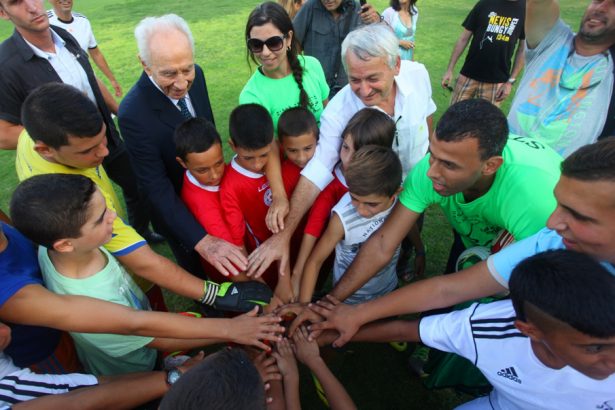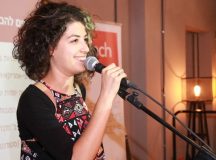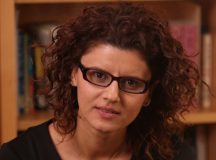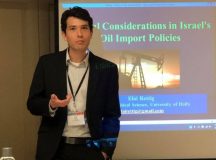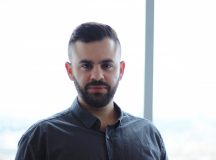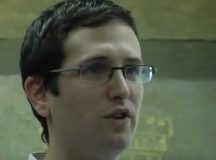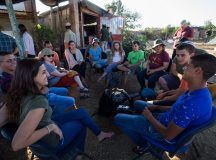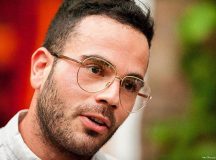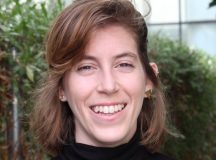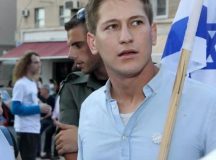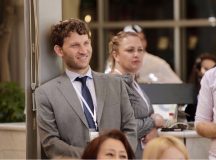Yaniv Yitshak lives with his wife Hadassah and their two children in the community of Yerucham where he runs pre- and post-army programmes at Kulana, a centre for culture, education and community.
To envision Israel at 80, we should begin with the wisdom of Elijah Benamozegh (1882-1900), the Rabbi of Livorno, Italy. Benamozegh was a scholar of Talmud and Kabbala, a halachic authority, a writer of Bible commentaries, and a philosopher who read and wrote in Hebrew, French, Italian and Moroccan, where his roots lay. He had read all the greats of his time and he had sat in all the right universities. However, it was his very willingness to engage with western philosophy – thought of by some as heretical and called ‘external teachings’ – that led to him being attacked by the sages in Israel, Syria and Iraq.
Benamozegh’s reply to the sages – in a missive called The Myrrh of Gilead – used a Talmudic story as an analogy to defend his approach: ‘An elderly man has two wives, one young, the other old, and they despise one another. The man’s hair is turning white with age, yet the younger wife begins pulling out his white hairs [because she wants him to look young], while the elder pulls out his black hairs [because she wants him to look old] … until he is soon bald.’
In rhyming verse, Benamozegh compares himself to this man: ‘So it is for me. Despite criticisms of either faith or wisdom, the two belong together. Yet because I respect both I am perceived by some as a crazy Hasid while for others I’m a heretic … I am left suspended in the air – neither apostate nor believer, neither philosopher nor rabbi, neither cursing nor praying, neither night nor day!’
The history of the Jewish people has always been in an intimate relationship with the revolutions that have echoed through parallel societies and cultures. The belief in one God paved the way to the monotheistic world. The Exodus story became the bedrock for the cries of African-Americans, ‘Let My People Go!’ Judaism developed between these revolutions and continued despite the events that threatened to silence it.
The destruction of the Kingdom of Judea and the later invasion by the Roman Empire brought about the collapse of the Temples, which until then had been the place of God’s residence, the site where faith had been materialised in the boundaries of time and space. Many see this transition from the Beit Mikdash (Temple) to the Beit Midrash (Study Hall) as the reason why Judaism survived, with the Divine Presence subsequently being located wherever there was a Jewish community rather than being connected to a specific territory. The Talmud explains a teaching from Rabbi Shimon Bar Yochai that ‘In each place the Jewish people are exiled, the Divine Presence is with them,’ a view that not only emphasises a connection between a people and their God, but also detaches the connection between that people and a particular place.
One revolution that thundered through Christian faith and culture in Europe – secularisation – also affected the Jewish communities in Europe. The secular movement foretold of a faith in the human rather than the Divine, dampening down – and in some places even erasing – the world of faith. This movement enabled a new imagining of the self and the socio-political order and in time created modern nationalism. From here we can understand the roots of the Zionist movement, which at the very least sought to appear like the national movements around it, seeking a national home for its people.
Thus it was that ‘negating the exile’ became the basis of the Zionist project. At the same time it was, paradoxically, the secular Jews that sought to deny the Divine who helped fulfil the Divine promise of the Jews returning to the land. As Amnon Raz-Krakotzkin quips, they may not have believed in God, but they believed ‘He promised them the land’ primarily due to the Jewish people’s deep cultural and historical connections.
Let’s return to Benamozegh. He writes from his awareness of, and his ease with, being intimately part of two civilisations – Christian-Western and Jewish-Eastern. Even though he doesn’t use these concepts, it’s clear that he senses two worlds within one existence.
It is Benamozegh’s awareness of the need to bridge polarities and his ease with mediating difference that we need today. The tensions Benamozegh found within himself are the same tensions felt today by Israel’s state and society. We are at the beginning of an era in which we will be obligated to build bridges; in culture, in education and in faith – between East and West, religious and secular, Jewish and Muslim, and in the words of Benamozegh ‘philosopher and Rabbi’.
As Israeli society faces this challenge, may we ensure we don’t pull out the white and black hairs on our head and end up bald.

